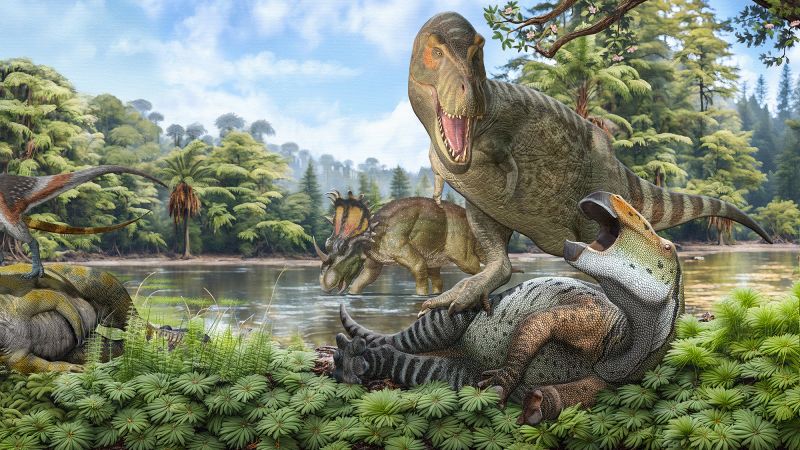Recent research has shed new light on the origins of one of the most notorious dinosaurs in history: Tyrannosaurus rex. A new study reveals that the direct ancestors of T. rex likely made their way to North America from Asia by crossing a land bridge that once connected the two continents. This conclusion, reached by a team spearheaded by Cassius Morrison, a doctoral candidate in paleontology at University College London (UCL), contributes to the long-standing debate among paleontologists about where the “king of the dinosaurs” truly came from.
Morrison and his colleagues utilized mathematical modeling as a key methodology in their study, arriving at the assertion that the precursors to T. rex likely crossed the Bering Strait—an area that would eventually separate modern-day Siberia from Alaska—approximately 70 million years ago. This assertion is supported by previous research that indicated a closer relation between T. rex and the large carnivorous dinosaur Tarbosaurus, which lived in Asia, than with more prominent predators found in North America, such as Daspletosaurus.
During the era in which these ancient creatures roamed, the environment that would ultimately welcome the T. rex ancestors featured temperate rainforests, sharing similarities with the climate of British Columbia today. Morrison elaborated on this, stating that the tyrannosaurids, the family which includes T. rex, would have existed in lower numbers relative to their herbivorous counterparts. This ecological dynamic mirrors the current interactions of apex predators, like lions, compared to their prey.
A major challenge encountered by Morrison and his research team, however, was the relative scarcity of fossils associated with these early tyrannosaurs. As Morrison explained, fewer individuals of these apex predators mean a lower likelihood of their remains being fossilized and discovered. Thus, the research team decided to implement mathematical models that incorporated both existing fossil records and the evolutionary lineage of T. rex, while also considering past climatic and environmental conditions.
What is noteworthy about this modeling approach is its adaptability; it accounts for gaps in the fossil record and stands ready to be revised whenever new discoveries surface in future explorations. Morrison suggested that, based on the findings, it is plausible that more fossils of T. rex ancestors remain hidden and yet to be uncovered in Asia.
The study also documents a significant increase in the size of tyrannosaurids, including T. rex, during periods characterized by a decline in global temperatures. This suggests that these dinosaurs flourished in cooler environments, possibly benefiting from adaptive features such as feathers or an elevated warm-blooded nature. This boom in size followed the extinction of the carcharodontosaurids, another group of massive carnivorous dinosaurs, which created an ecological void in the food chain.
By the time of the dinosaurs’ extinction, T. rex had reportedly grown so large that it could weigh up to 9 metric tons, an equivalent mass to a large African elephant or a light tank. Study co-author Charlie Scherer, who graduated with a master’s in Earth sciences and plans to pursue a doctorate at UCL, emphasized the significance of their findings in illuminating the processes that led to the emergence of the largest tyrannosaurs in both North and South America during the Cretaceous period.
Scherer posits that the gigantic size of tyrannosaurs may have been a response to the absence of equally large carcharodontosaurids, who had dominated the ecosystem approximately 90 million years ago. He pointed out that this extinction likely eliminated the “ecological barrier” which had previously restricted the evolutionary potential of tyrannosaurs, allowing them to grow to such extraordinary sizes.
Steve Brusatte, a renowned paleontologist from the University of Edinburgh who was not involved in the study, praised the thoroughness of the research. He noted that it compellingly illustrates how climate conditions influenced the evolution of these gigantic creatures. According to Brusatte, cooler temperatures facilitated the growth of larger dinosaurs, implying that the formidable T. rex did not come to dominate the planet purely through fate, but rather, was also propelled by favorable environmental conditions.
The results of this pivotal study have been officially published in the esteemed journal *Royal Society Open Science*, contributing significantly to our understanding of these fascinating prehistoric titans.



